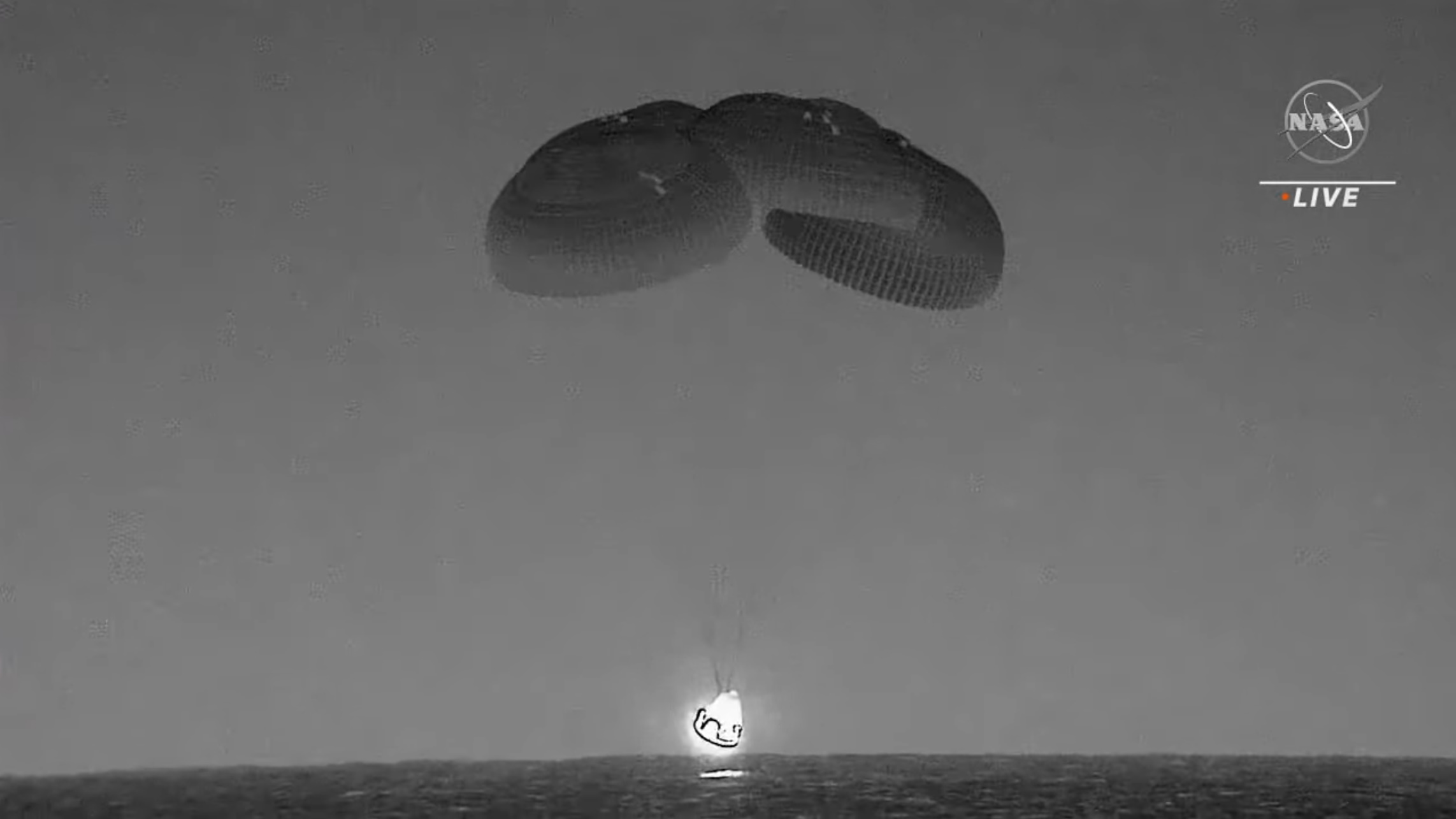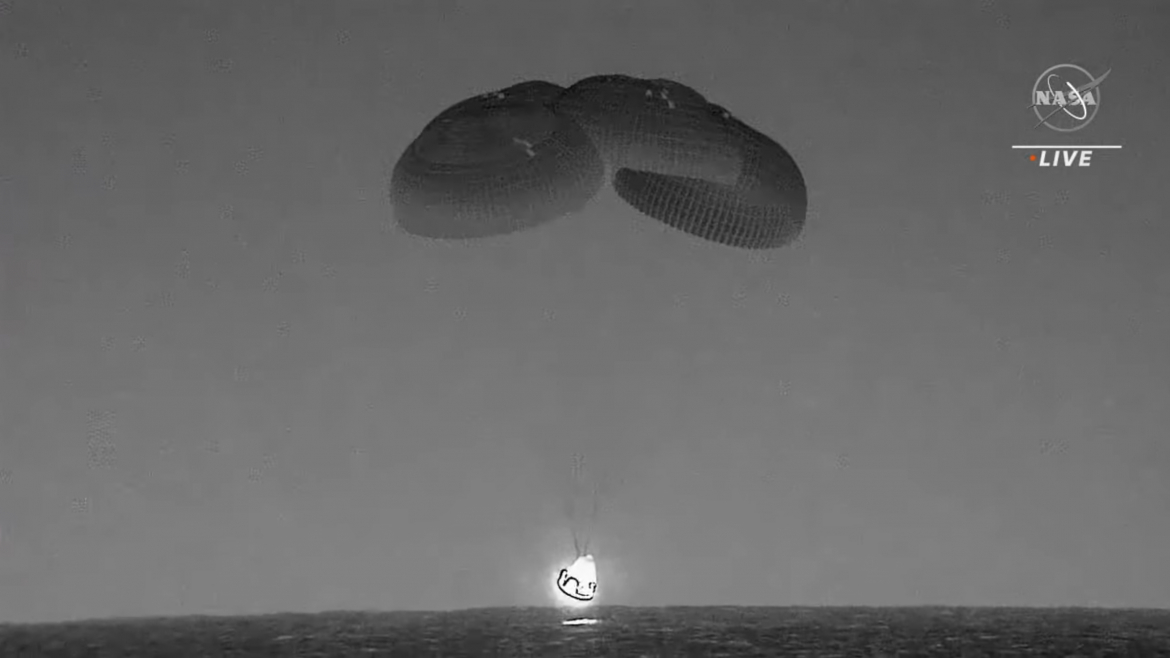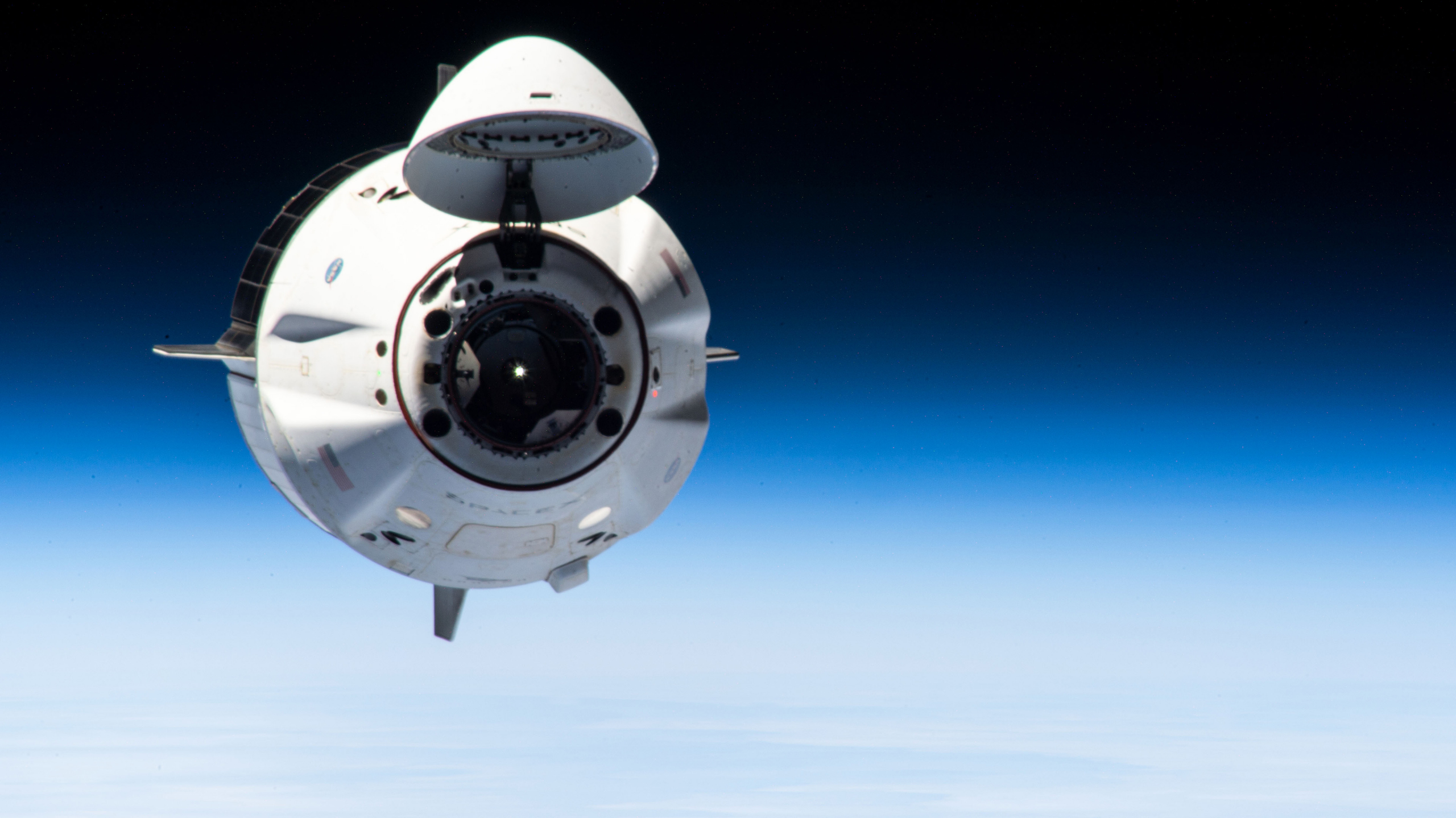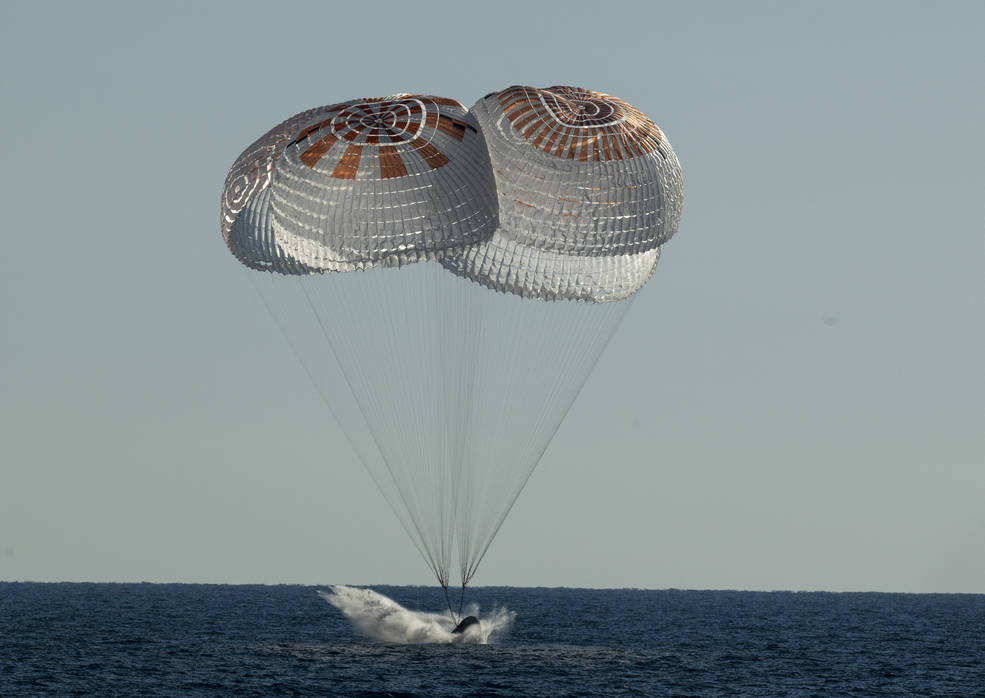Hamartia Antidote
ELITE MEMBER

- Joined
- Nov 17, 2013
- Messages
- 35,188
- Reaction score
- 30
- Country
- Location

SpaceX Crew-6 returns to Earth after six-month ISS Stay - NASASpaceFlight.com
After more than six months in space, four people splashed down in the waters near…

After more than six months in space, four people splashed down in the waters near Florida. The SpaceX Crew-6 mission, which launched on March 2 and docked with the International Space Station (ISS) the following day, undocked on Sept. 3 at 7:05 EDT (11:05 UTC). Recovery vessels retrieved the crew and their capsule, Crew Dragon Endeavour (C206), from the Atlantic Ocean with the help of support vessel Megan in the early morning hours of Sept. 4.
The four people returned to Earth, who were members of both Expedition 68 and 69 aboard the ISS, include Commander Stephen Bowen, Pilot Warren “Woody” Hoburg, both from NASA, Russian cosmonaut Andre Fedyaev, and Sultan AlNeyadi, the first long-duration crew member from the United Arab Emirates and only the second Emirati to fly in space.
Crew Dragon Endeavour initially docked to the zenith port of the Harmony node of the ISS back in March. However, it was moved to the forward docking port of the same module in May to allow an incoming Cargo Dragon capsule to be closer to the station’s robotic arm, Canadarm2. It is from this forward port where Endeavour‘s onboard computers will autonomously back the capsule away from the orbiting laboratory.
Dragon uses its built-in Draco thrusters over the course of two separate burns, known as burn zero and burn one, to maneuver outside of an area known as the “Keep-Out Sphere.” This imaginary circle, which extends 200 meters around the ISS, officially denotes when NASA and other ISS partner nations are involved with the mission. Once it leaves that sphere, mission control in Houston will only monitor the progress of reentry, while all aspects of control switch over to SpaceX.

Crew Dragon Endeavour undocks from the ISS during the Crew-2 mission. (Credit: NASA/SpaceX)
This was followed approximately one hour later by burn two, a longer burn that helps place the capsule in a lower orbit below and away from the ISS.
SpaceX and NASA have seven splashdown sites with four located in the Gulf of Mexico and three in the Atlantic Ocean. The primary and secondary landing sites are typically selected two weeks in advance. Teams actively monitored Hurricane Idalia as it came through the Gulf, making landfall on Florida’s “big bend” region on Aug. 30, before proceeding northeast and into the Atlantic. Splashdown of this mission was initially scheduled for Sept. 3, however, NASA delayed it due to weather. It is unclear if the weather delay was a direct result of the hurricane.
SpaceX crew recovery ship Shannon was docked in Tampa along the west coast of Florida both in anticipation of the hurricane and for the crew splashdown. The second recovery vessel, Megan, was relocated to Port Everglades to ride out the storm before moving to its splashdown location.
Megan, named after astronaut Megan McArthur, and Shannon, named after astronaut Shannon Walker, have been used on other Crew and Cargo Dragon missions to retrieve the spacecraft and crew members.
Both ships are equipped with a helipad for astronauts to be transported to shore shortly after splashdown, a medical facility for observing and assessing astronauts’ conditions, and radar to track the spacecraft. The back of the boats also contains a lift. It attaches to special points on the capsule prepared by a fast response team that will take a smaller boat out and jump onto the freshly returned capsule. Once hooked up, it is lifted onto a “donut” stand and retracted underneath a covering on the ship.
The weather requirements for Crew Dragon splashdowns are as follows: no lightning within 10 miles, waves with no greater than a seven-degree slope, wind speed no greater than 12 miles per hour, less than a 25 percent chance of rain, and at least one-half mile visibility in the daytime or one mile at night.
Entry
Approximately one hour prior to splashdown, Endeavour jettisoned its unpressurized segment known as the “trunk”, which revealed Dragon’s tiled heat shield. This was followed shortly after by a deorbit burn, slowing the spacecraft down just enough that it re-entered Earth’s atmosphere, which helped slow the craft down dramatically. The forward thrusters around the docking ring were used for this burn.
Following completion of this burn, the nose cone closes and locks. This protects the just-used thrusters and docking ring in addition to other communication and rendezvous equipment which is no longer needed.
Splashdown
As plasma builds around the capsule, mission controllers lose contact with the crew for a brief time known as a loss of signal, sometimes referred to as LOS.

The SpaceX Crew Dragon Freedom returns to Earth following the Crew-4 mission. (Credit: NASA/Bill Ingalls)
Once Endeavour detected that was at a certain altitude and velocity, it deployed its two drogue parachutes and slows down to around 560 kilometers per hour (350 miles per hour).
The parachutes partially deploy at first before fully inflating in a process known as reefing. Reefing allows parachutes to open in a slower and more controlled manner to avoid higher loads on the vehicle and crew during descent.
Shortly after full drogue inflation, the drogue parachutes are cut and the main parachutes deployed. The four main parachutes also reef to ease the loads on the capsule and crew.
The main parachutes slow Dragon down to around 24 kilometers per hour (15 miles per hour) for splashdown.
Crew-6 Mission
The crew contributed to hundreds of different science experiments and technology demonstrations according to NASA. These included human health experiments, such as BFF-Meniscus-2, which printed knee tissue in microgravity as an experiment in bioprinting.
During a spacewalk, the crew helped install more of the Station’s new ISS Roll-Out Solar Arrays (iROSA). Once all are installed, these are expected to enable a 30% increase in power for operations and scientific investigations on the orbiting lab.
The crew also conducted science involving our own planet, photographing and documenting the planet along with connecting with and talking to students across the globe from space.
This mission marks SpaceX’s sixth operational crew mission to the ISS under NASA’s Commercial Crew Program.
(Lead image: Crew Dragon Endeavour docks to the ISS during the Crew-6 mission. Credit: SpaceX)
